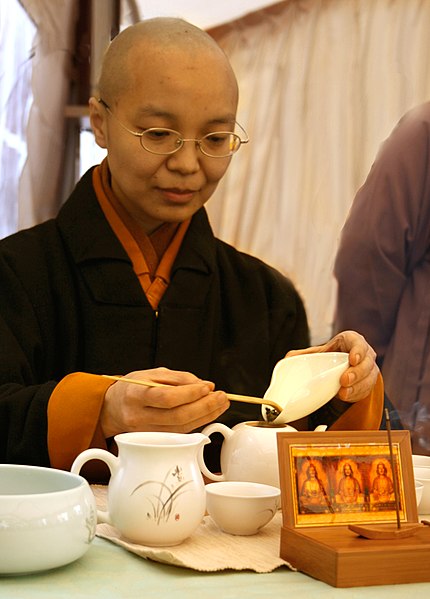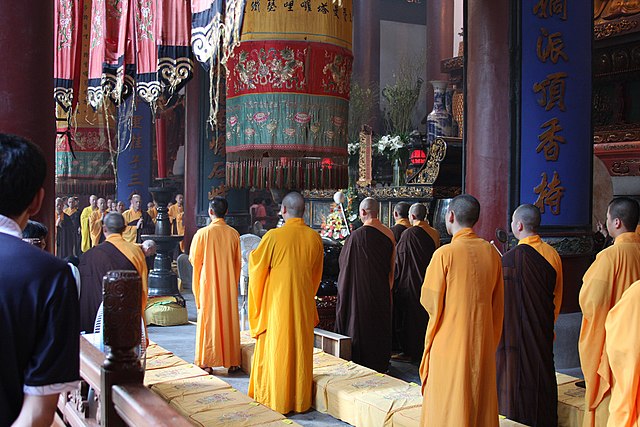The Dharmaguptaka are one of the eighteen or twenty early Buddhist schools, depending on the source. They are said to have originated from another sect, the Mahīśāsakas. The Dharmaguptakas had a prominent role in early Central Asian and Chinese Buddhism, and their Prātimokṣa are still in effect in East Asian countries to this day, including China, Vietnam, Korea, and Japan as well as the Philippines. They are one of three surviving Vinaya lineages, along with that of the Theravāda and the Mūlasarvāstivāda.
Central Asian Buddhist monk teaching a Chinese monk. Bezeklik Caves, 9th–10th century; although Albert von Le Coq (1913) assumed the blue-eyed, red-haired monk was a Tocharian, modern scholarship has identified similar Caucasoid figures of the same cave temple (No. 9) as ethnic Sogdians, an Eastern Iranian people who inhabited Turfan as an ethnic minority community during the phases of Tang Chinese (7th–8th century) and Uyghur rule (9th–13th century).
Full bhikṣuṇī ordination is common in the Dharmaguptaka lineage. Vesak festival, Taiwan.
Bhikṣus performing a traditional Buddhist ceremony in Hangzhou, Zhejiang province, China
Mahīśāsaka is one of the early Buddhist schools according to some records. Its origins may go back to the dispute in the Second Buddhist council. The Dharmaguptaka sect is thought to have branched out from the Mahīśāsaka sect toward the end of the 2nd or the beginning of the 1st century BCE.
Gandhāran Mahīśāsakas are associated with the Pure Land teachings of Amitābha Buddha.




